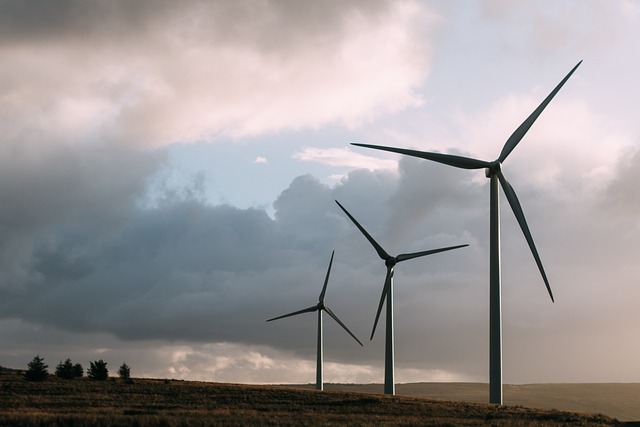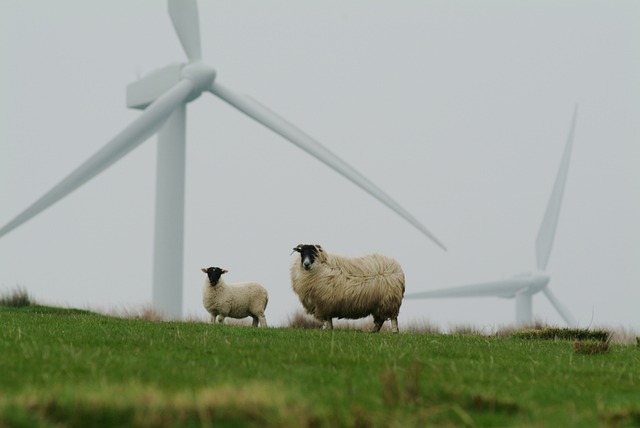Is Wind Turbine Syndrome Real?
What is Wind Turbine Syndrome?

Wind energy production has rapidly been increasing, providing a renewable source of power that is comparable in price to older fossil fuel based technologies. Yet as wind turbines have continued to spring up on the landscape, complaints from people living near the turbines have been growing. Health effects, including migraines, ear pain, nausea, dizziness, vertigo, fatigue, irritability, tinnitus and sleep disturbances have been reported (Farboud 2013). These symptoms have been labeled “wind turbine syndrome” or WTS for short.
The syndrome is thought to be caused by exposure to the sounds created by wind turbines. When active, wind turbines produce sounds that range from below the threshold of hearing— so called infrasonic sound—up to around 2000 hertz, which is the swish of the blades through the air (Kamp 2018). The sounds are not always present and can vary based on wind conditions and other parameters.
For the most part, WTS has been dismissed as a psychosomatic illness without any physiological cause. And yet there is data that suggests that a subset of the population may be sensitive to wind turbine sounds. Due to the number of reports and the “newness” of the technology, it’s worth taking these concerns seriously and seeing what has been documented in the research literature.
Initial Discovery of WTS
Nina Pierpont, MD, a New York pediatrician, investigated the health effects of living near wind turbines on 10 families and published her findings in a book. People with hearing loss, a history of migraines or motion sensitivity were most often affected by WTS. Not everyone living close to a wind farm was found to have problems. Based on the findings, Dr. Pierpont assumed that WTS was caused by sound vibrations causing problems with the vestibular or “balance” system of the inner ear. This hypothesis would make sense based on the types of symptoms reported.
A publication in 2011 built further upon the hypothesis of the existence of WTS. The authors noted that beyond sound, wind turbines also created dirty electricity on the powerlines of individuals living or working nearby (Havas 2011). While not well researched, dirty electricity is thought to be a form of harmful electromagnetic fields.
The Potential Physiology of WTS
Some of the initial research reviews of WTS pushed the narrative that it was not caused by the physiological effects of low frequency sounds. The authors believed WTS was more likely due to the annoyance factor of simply seeing and hearing the turbines (Knopper 2011). A separate review in 2013, however, took a more open-minded approach (Farboud 2013). They acknowledged research showing that inaudible low frequency sounds can affect the inner ear. They concluded that some individuals are susceptible to uncomfortable sensations in response to low frequency noise and that these types of exposures in susceptible individuals can have far-reaching consequences.
In an attempt to prove or disprove the existence of WTS, researchers have explored the issue from a number of different perspectives. There are people that are known to have a type of damage in the inner ear that can lower the sound threshold where low frequency noise can create problems. Noise levels from wind turbines are close to the sound threshold of these individuals, offering a potential explanation as to why some people are sensitive to wind turbine noise (Harrison 2015).
Exposure Research
A study out of Iran looked at personnel who worked at a wind turbine facility (Abbasi 2015). The employees were exposed to wind farm noise throughout their work day. The study found that employees experienced increased irritability, worse sleep and decreasing health due to wind turbine noise exposure.
That same year, a meta-analysis found that wind turbine noise is a source of significant annoyance, increased sleep disturbances and decreased quality of life (Onakpoya 2015). The authors suggested that a community’s preferences should be considered in any new wind farm installation. However, a separate analysis found that studies on the harms from wind turbine noise did not take into account other environmental exposures that could explain the associations, including agricultural odors and road noise (Blanes-Vidal 2016).
A study on badgers living near wind farms found that those living closer to the wind turbines had higher levels of cortisol than badgers who did not (Agnew 2016). Badgers close to the wind farms had cortisol levels that were 264% higher than badgers who lived more than 10 kilometers away. Additionally, badgers that had been living near older installations still had elevated cortisol, indicating that they were not able to adjust to wind turbine sound exposure.
Studies on exposing individuals to recorded wind turbine noise while sleeping has had mixed effects (Liebich 2022). Some studies have shown disturbed sleep while some have not. This could easily be due to the difference between a recording of wind turbine noise and actual exposure. Being near a wind farm could easily resonate a house differently than playing a recording of that same wind turbine. Future studies might do well to have participants sleep in structures exposed to real wind farms that have been causing WTS as compared to just recordings.
Reviews of the Evidence Overall

A review from 2018 found that our understanding of wind turbine noise and how it propagates inside human built structures is poor (Carlile 2018). The potential physiological effects are also not well explored. The authors recommend more research of people experiencing WTS to better understand the potential physiological impact of wind turbine noise on human individuals.
More recent reviews have continued to raise significant concerns, concluding that wind turbine noise has adverse health effects on humans and should be taken seriously (Dumbrille 2021).
Conclusion
Our understanding of WTS is limited and controversies still exist. However, data has consistently shown that people living near wind turbines suffer increased annoyance, sleep disturbances and reduced quality of life. That fact alone should give us pause as to the potential effects of wind turbines on both physical and mental health.
Dismissing WTS outright as “made-up” or psychosomatic, seems premature. Considering how rapidly wind farms are being built, we need the research on the potential health effects to catch up to the reality of what communities are currently experiencing.
Even if wind turbine noise is proven to cause health problems, innovative designs could reduce, if not eliminate, the issue. First and foremost, we need to accept the possibility that WTS is a valid concern and the underlying physiological mechanisms and remedies need to be identified and explored.



